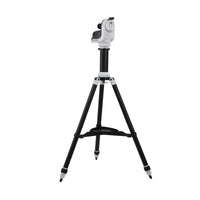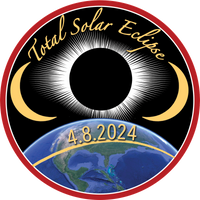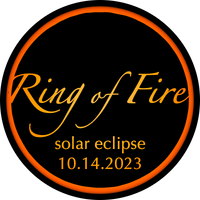
Vespera II First Impressions
As I write this January 8th, we had a snowstorm in Denver last night, and it's 16° F tonight, but you better believe I'm taking advantage of a clear sky to try out the new Vespera II. I did a side by side test of the Original Vespera and the new Vespera II from my back yard under Bortle 7 skies in Denver, Colorado. Target choice and time on some targets was limited by visible sky, since I have a lot of trees around. The results were in some ways pretty surprising.
Vaonis gives an operating temperature range for the Vespera and Vespera II down to only 32° F / 0° C, and we were well below that at 16° F. While the units may operate less optimally at this lower temperature, we've never seen them completely fail due to the cold, and both units kept running.
 The Double Cluster captured with Vespera II (click to view full size)
The Double Cluster captured with Vespera II (click to view full size)
First, let's start with some basics. The Vespera II upgrades the sensor from the original Vespera from 2 Mp to 8 Mp, and increases onboard storage from 10 GB to 25 GB. The Vespera II is the same form factor as the original Vespera - the only small ways to physically tell them apart is the branding on the front, and the difference of the standard USB-C charge port replacing the old magnetic charge port on the original Vespera. This commonality means all the same filters and the humidity sensor from the original Vespera work with Vespera II.
Like the original Vespera and other current competitors, there is no hardware de-rotator. The instruments work around this by taking 10 second individual exposures and using software stacking. In longer imaging runs though, you will see the effects of the field rotation out towards the edges of the frames. In some cases, this will be a bit of streaking of the stars, or areas of the frame that are noisier because there is less total data due to the rotation. The software stacking does a good job with this, but there's still no substitute for a physical derotator or EQ tracking.
|
|
|
Above, I imaged the little dumbbell at 80° above the horizon. Tracking near the Zenith is a challenge for any Alt-Az telescope. The Original Vespera test unit struggled with imaging the little Dumbbell at 10° from zenith, while the Vespera II seemed to handle the task much better, with rounder stars in the center of the image, but some of the slight streaking and field rotation apparent around the edges of the frame. Streaking in the stars was apparent across the image form the original Vespera here. You will want to avoid imaging this close to zenith if you can help it, but it's nice to see the Vespera II does a reasonable job regardless.
Is This The Astrophotography Smart Scope We've Been Waiting For?
With the new 8.3 Mp sensor, the Vespera II is beginning to step into the realm of competing with traditional AP setups. The Mosaic mode enabling up to 24 Mp imaging makes this an easy option of imagers looking for simplicity and portability. While you may have looked on the original Vespera and it's 2 Mp sensor as a bit lacking, Vespera II looks more like a real AP tool.
The Vespera II also retains a lot of what we like about the original Vespera with its compactness and ease of use. All of your accessories like filters and sensors will work with the Vespera II just like they did on the original Vespera. The exception here is the level and magnetic charge cable. The magnetic connector is gone, replaced by a standard USB-C charge port. This is another change we like, because it means you can use any standard USB-C charge cable, and not worry about losing the custom magnetic cable the Original Vespera includes.
|
Original Vespera |
Vespera II
|
Above: Horesehead Nebula with the dual-band filter captured side by side, approximately 1 hour integration time. We were a bit surprised to see the image came out notably dimmer on the Vespera II.
Notable Changes
|
Original Vespera Orion Nebula (Click for full size)
|
Vespera II Orion Nebula (Click for full size)
|
The Color Is Different
Imaging with the two units side by side, we were surprised how different the colors were between them. Even without using any filters, you'll notice much warmer tone images from the Vespera II. This was particularly obvious with the Orion Nebula. This isn't really good or bad, just different. If you prefer the older color balance, it's easy enough to adjust your images in any editor to match the cooler color temperature of the older Vespera images.
Accessories Not Included
The Vespera II is sold as a bare unit with no tripod or power adapter. This can be a good thing, since many people will opt for a full height tripod in place of the short tripod included with the original Vespera. With the switch over to USB-C as the charge port, Vaonis has also opted not to include a charger or charge cable, since most people have a collection of USB-C cables by now for phones, laptops, and other devices.
Because we think it's still nice to have a charger with your Vespera, we have added packages that include tripods and chargers.
What We Don't Like
Short Battery Life
Unfortunately, the Battery life is coming up short. Vaonis only rates the Vespera II for 4 hours of operation, which matches our initial test. I charged both the Original Vespera and Vespera II up to 100% before the test. I found that after 3 hours, the Vespera II was showing 25% battery left in the Singularity app, while the original Vespera was still going strong at 65%. I kept the Vespera out all night without issue, but plugged the Vespera II into an external battery at this point so we could keep testing. We have had the Original Vespera out all night, imaging for nearly 8 hours off of the internal battery alone. It's clear Vespera II doesn't have the endurance of the original, but will be fine for more casual use of 2-4 hours in a night.

Still No Planetary Mode
Despite the enhanced resolution sensor, the Singularity software still doesn't have an appropriate planetary imaging mode. This is really disappointing because the sensor now has the resolution to actually start getting a little bit of detail on Jupiter. In the zoomed-in image at right you can see banding on the planet. As it is, the image simply refreshes every few seconds without a proper planetary video mode or lucking image stacking (this is true for Lunar and Solar as well). Hopefully this is an area Vaonis improves in the future in the software. The Vespera II clearly has potential here.
Limited Storage
Despite the increase to 25 GB, if you choose to save the FITs files for your imaging session, the storage will be mostly filled in only 4-5 hours due to the larger file sizes of the 8Mp images. More onboard memory would have been appreciated, especially considering how cheap flash storage is. There remains no option to add an SD card or expand the onboard storage, so this limits how many raw frames you can save in a session. Note that if you are only saving the final FITs files, this will not be a limitation. Also worth noting that the onboard stacking does such a good job, that most of the time there won't be much reason to save all the individual raw frames.
Is it worth upgrading from the original Vespera?
Vespera II is mostly about enhanced resolution. The 8 Mp sensor is a BIG improvement here, and as mentioned above makes this a contender as a real astrophotographer's tool. Our initial tests though seemed to show less h-alpha depth compared with the original Vespera. This may be down to the processing, or the sensor, we'll need to investigate further. You can compare for yourself the images I took, and keep in mind these are under less than ideal conditions and bortle 7 skies. The question is really, should you upgrade now, or wait for the 12.5 Mp Vespera Pro later in the year?
Vespera II is probably good enough for most people who aren't looking to print professional large format photos. (Actually, it probably is good enough for this in many cases.) The difference between the 8.3 Mp sensor of the Vespera II and the 12.5 Mp sensor of the Pro will certainly be a further improvement, but for the average person, the Vespera II is going to be plenty. In reality, the Original Vespera is also still good enough for social media sharing and even smaller prints.
For serious astrophotographers, I would say it's worth waiting for the Vespera Pro, though it won't start shipping until probably late Q2 or early Q3. One big advantage of the Pro will be 9x the onboard storage: 225 GB vs 25 GB on the Vespera II, and a longer battery life. If that doesn't matter to you, you can get the Vespera II today from $1590, while a Vespera Pro will run you $2499, though with a few added accessories.
As someone who has greatly enjoyed using a Vespera for the last two years, I can't wait to get the Vespera II out under dark skies, and plan to use it for the April 8th eclipse as well. I'm also eagerly awaiting the Pro, and expect that will become my tool of choice once I get my hands on one later this year.
Other Competitors
Beyond the Vespera II and Pro, the two main competitors to look at are going to be the ZWO SeeStar 50 on one end, and the newly announced Celestron Origin on the other. (We regard the Unistellar offerings, due to their file handling and data ownership license, are more of a group viewing and sharing scope, not an astrophotographer's tool.)
The SeeStar 50 is hands down the budget option champ. It's a powerhouse of a scope for the price and capabilities, and gives the original Vespera serious competition. While the SeeStar is impressive, just like the original Vespera, it's limited by a 2 Mp sensor. That said, for a budget option, the SeeStar 50 is the best game in town.
What about the new Celestron Origin? The Origin IS a serious AP tool with a very impressive 6" f/2.2 RASA optical system. Intriguingly, Origin will harness a version of the same Sony IMX 182 sensor used in the original Vaonis Stellina. With the size and speed of the optics alone, Origin looks like it has a lot of great potential. Origin is also the only Smart Telescope that looks like it will be upgradable. Time will tell how the Origin software will compare in terms of processing and capabilities for more casual users, but pros may find it to be a viable plug and play alternative to more complex rigs while still handling their own image processing. For now, I think Vaonis has the software edge with their included Mosaic capabilities, which also produce higher resolution images. Vespera II also wins for portability, fitting in a small backpack. It's easy to travel with and even take on a plane. Origin is a full size instrument that's easily car transportable, but not air travel ready.
If you don't already have a smart telescope and want one now, and want it for the Eclipse, get the Vespera II or Seestar 50. If you can wait a while, and want a pro-level AP tool, then both the Celestron Origin ($3,999) and Vespera Pro ($2,499) are worthy contenders, each for their own strengths.


 Original Vespera
Original Vespera Vespera II
Vespera II






